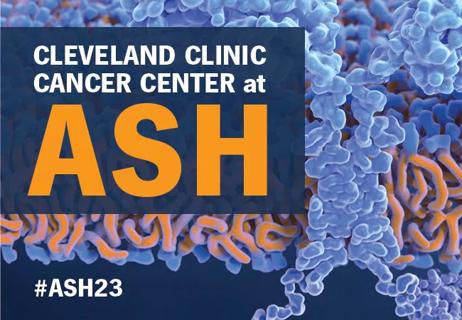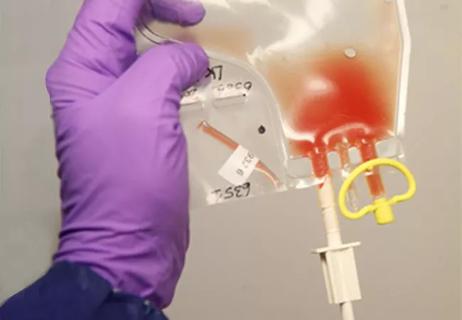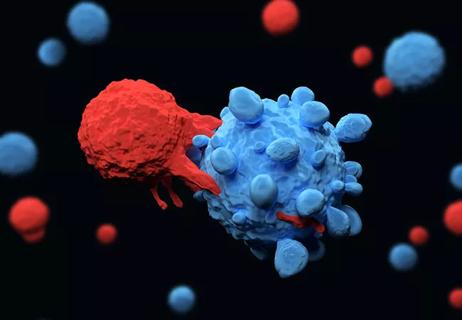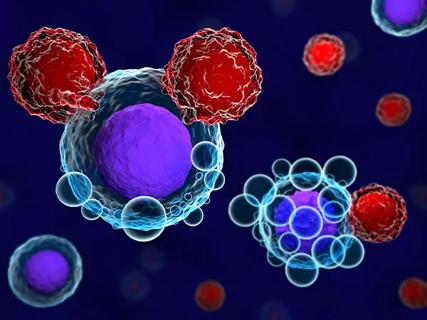May offer much needed treatment option for patients who relapse early

For patients with myelodysplastic syndrome (MDS) or acute myelogenous leukemia (AML) who relapse soon after allogeneic hematopoietic stem cell transplantation (HCT), the prognosis is poor: The estimated survival rate for patients who relapse within six months ranges from less than five to 10 percent. Currently, there is no standard of care for this condition. “It’s a significant problem,” says Yogen Saunthararajah, MD, a hematologic oncologist in the Department of Hematology and Oncology, Cleveland Clinic Cancer Center. “We don’t cure the majority of patients. Of the select few who are eligible to have a transplant, only 50 percent do well.”
Cleveland Clinic is a non-profit academic medical center. Advertising on our site helps support our mission. We do not endorse non-Cleveland Clinic products or services. Policy
Treatment options after disease relapse, such as immunosuppression withdrawal and donor lymphocyte infusion (DLI), have dismal outcomes. The options are limited due to possible residual toxicities of conditioning chemotherapy or myeloablative radiation as well as the risk of graft-versus-host-disease (GVHD).
In recent studies, the hypomethylating agent azacitidine (AZA), a first-line treatment for AML and MDS, has shown promising results, with some patients treated with AZA following relapse achieving complete remission. Azacitidine is a cytidine analog that incorporates into replicating DNA or RNA. The incorporated residues bind to DNA-methyltransferase-1 (DNMT1), leading to DNMT1 degradation and subsequent global DNA hypomethylation, without causing overt cytotoxicity. As a post- HCT therapy, it may enhance the graft-versus-leukemia effect while also mitigating GVHD.
“Azacitidine has a different mechanism of action than common chemotherapy drugs used to treat leukemias and other cancers that directly kill cancer cells and destroy normal cells as well. It brings a noncytotoxic approach that considerable data has shown can aid an immune-based attack of cancer,” says Dr. Saunthararajah.
Cleveland Clinic participated in a multicenter study of 29 patients with AML and MDS who were treated with AZA from 2009 to 2016 for disease relapse after allogeneic HCT. All were ineligible for a second HCT due to early relapse or poor health status.
The median age of the study cohort was 63; there were 10 females and 19 males, 23 with AML and 6 with MDS. The disease had relapsed at a median of 105 days after HCT.
The treating physician determined the AZA dose. The median starting dose was 40 mg/m2 per day (the range was 16 to 100 mg) for five to seven days of a 28-day cycle. Previous studies have used a range of doses, including the standard dose of 75 mg/ m2 per day.
Optimal dosing of hypomethylating agents is only partially understood; lower doses with more frequent administration may achieve better intracellular drug exposure, allowing for optimized DNMT1 depletion. Also, lower doses may reduce the risks of inadvertently destroying functionally normal hematopoiesis, a major concern with any treatment administered soon after transplantation.
Ten patients received at least one donor lymphocyte infusion (DLI) during AZA treatment.
This was the first study of AZA in this population to measure DNMT1 following treatment as a potential pharmacodynamic marker to assess intracellular drug targeting (measured in eight of the patients).
At a median follow up of 6.3 months, seven (27 percent) patients had a durable response to the treatment: One patient who experienced a full hematologic response achieved long-term complete remission. Median survival was 6.8 months and was similar in patients receiving an AZA dose of less than 40 mg and those receiving a dose higher than 40 mg. DLI treatment did not influence response.
The lower dose of AZA appeared to cause less cytopenia than previous reports of treatment with higher doses and also did not exacerbate GVHD.
The retrospective DNMT1 testing results were inconclusive but did demonstrate the feasibility of measuring and following this pharmacodynamic biomarker in patients on AZA therapy. Future studies can clarify if such measurements can be used to guide AZA dose and schedule selection towards achievement of DNMT1-depletion from malignant cells.
While the study was small, the results “suggest that it’s possible to use azacitidine in a relatively nontoxic way to improve outcomes. It supports further study in larger groups. One of the key elements to study is DNMT1 testing which could potentially guide selection of minimal AZA doses needed to deplete DNMT1, to hit this target in leukemia cells without unnecessarily excessive doses that kill precious normal cells,” says Dr. Saunthararajah.
Low-dose AZA treatment could also serve as platform for other immune therapies, such as immune checkpoint inhibitors, that would capitalize on the cancer “showing more” and being more immunogenic as a result of DNMT1-depletion.
Dr. Saunthararajah and others are also developing an oral form of AZA that would be easier for patients to take and have superior pharmacology.
Illustration of blood cells by Donald Bliss. Source: NCI Visuals Online.

First-ever U.S. population-level retrospective analysis reveals many patients with systemic mastocytosis need faster intervention

Global R&D efforts expanding first-line and relapse therapy options for patients

A case study on the value of access to novel therapies through clinical trials

Multiple Cleveland Clinic sites to participate in National Cancer Institute trial comparing treatment regimens for newly diagnosed patients

Cleveland Clinic oncologists’ selected abstracts

On-demand stem cell mobilizer is an effective salvage strategy

Dispelling myths and sharing practical experiences

Research indicates strong rationale for expanding trial eligibility criteria